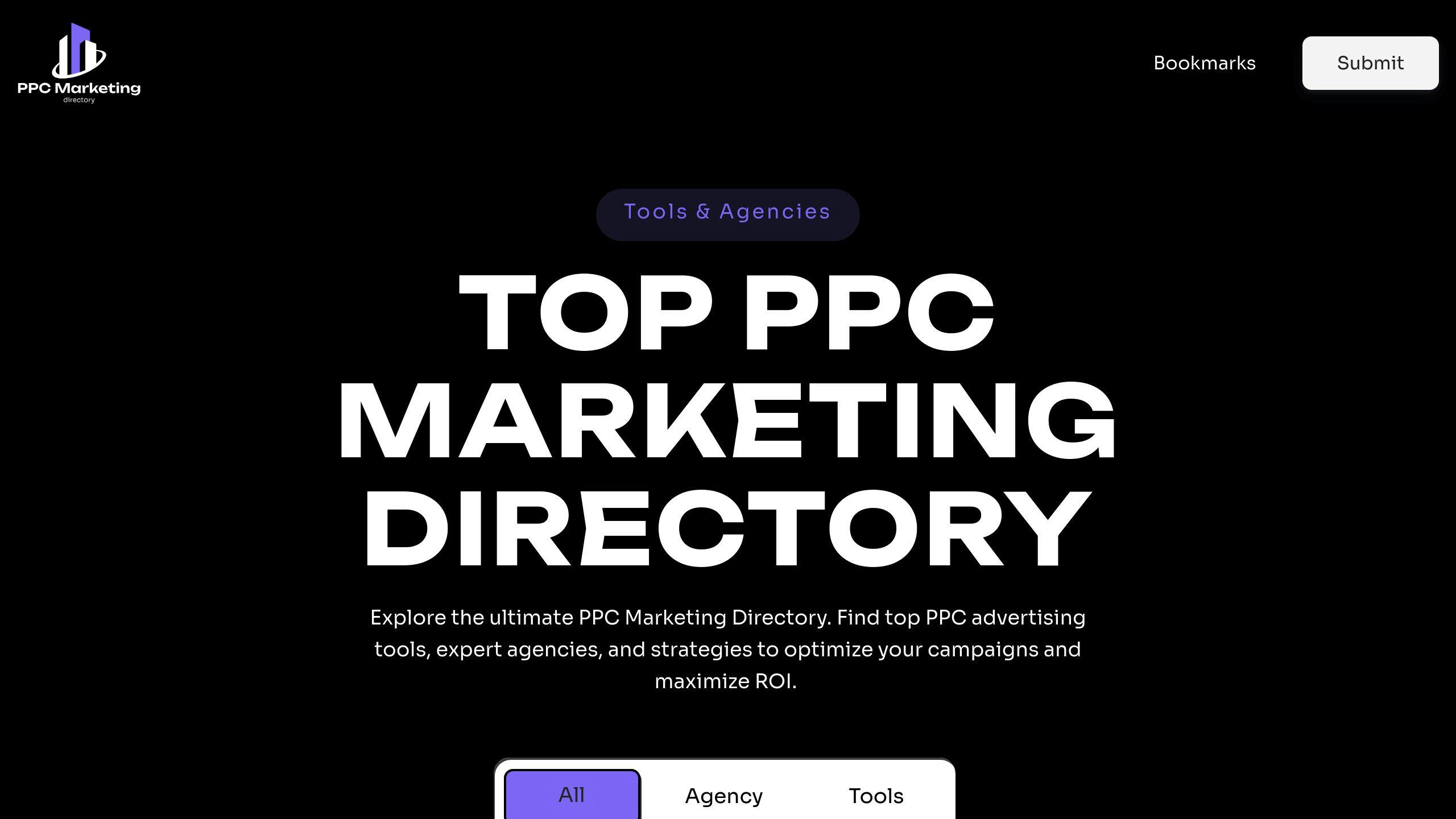Here’s how to do it:
- Focus on key metrics: CTR, CPC, Quality Score, Conversion Rate, and Impression Share.
- Use tools like SEMrush, SpyFu, and Google Ads Auction Insights for tracking.
- Analyze competitors’ keywords, ad copy, and landing pages to uncover strategies.
- Refine your campaigns: Adjust keywords, bids, and ad content based on insights.
- Monitor regularly: Weekly keyword updates, daily ad performance checks, and monthly market reviews.
Quick Overview of Tools and Focus Areas
| Metric/Area | Tools to Use | Why It Matters |
|---|---|---|
| Keywords | SEMrush, SpyFu | Spot opportunities and refine targeting |
| Ad Copy | Google Ads Preview | Improve messaging and engagement |
| Landing Pages | Unbounce, Instapage | Boost conversions through better design |
Start with these steps to outperform competitors in the PPC landscape.
Key PPC Metrics for Benchmarking
Metrics to Monitor
Keeping an eye on essential metrics can uncover your competitors' strategies and performance. Here's what to focus on:
- Click-Through Rate (CTR): This shows how relevant and effective an ad is. Since industry averages differ, it's important to compare CTR within your specific market [3].
- Cost Per Click (CPC): This highlights how efficiently competitors are bidding and using their budgets. Lower CPCs often signal smart keyword targeting and better quality scores.
- Quality Score: A critical factor affecting ad placement and costs. It combines elements like ad relevance, expected CTR, and landing page quality [3].
- Conversion Rate: This measures how well competitors turn clicks into actions, helping you identify areas for improvement.
- Impression Share: This indicates how often competitors' ads appear compared to the total available impressions, offering insights into their market presence and budget priorities.
Tools for Metric Tracking
To stay ahead, using the right tools to track these metrics is key:
- SEMrush: Tracks competitors’ keywords, ad positions, and ad copy performance.
- SpyFu: Provides insights into competitors' profitable keywords and ad spending [3].
- Google Ads Auction Insights: Compares impression share and overlap rates in your market [2].
For additional resources, check out the Top PPC Marketing Directory for tools and services to enhance your analysis.
"High-quality scores can lead to better ad positions and lower CPCs, emphasizing the importance of ad relevance and landing page quality" [3][2].
Regular tracking helps you spot trends and opportunities to outpace your competitors.
Steps for Conducting a PPC Competitor Analysis
Identifying Competitors' Keywords
Start by examining your competitors' keyword strategies using tools such as SEMrush and SpyFu [3]. Look at the keywords they target based on intent, their bidding tactics, and any overlooked long-tail keywords. This analysis helps you spot opportunities and assess how your strategy stacks up against theirs.
After understanding their keyword approach, shift focus to how they communicate their message through ads.
Evaluating Ad Copy and Creative
Leverage Google Ads' preview tool to study your competitors' ad headlines, descriptions, and extensions. Pay attention to their messaging and calls-to-action to uncover their main selling points and engagement techniques [3].
Once you've reviewed their ad content, the next step is to evaluate the landing pages where these ads direct traffic.
Reviewing Competitors' Landing Pages
A landing page's performance can significantly impact conversion rates, making it a key area to analyze. Focus on these elements:
| Landing Page Element | Key Aspects to Examine |
|---|---|
| Page Load Speed | Test how quickly pages load across devices |
| Content Relevance | Check if the page content matches the ad promises |
| Call-to-Action | Assess clarity and placement of CTAs |
| Trust Indicators | Look for social proof, testimonials, and certifications |
| Mobile Experience | Evaluate responsiveness and ease of navigation |
Tools like Unbounce and Instapage can provide insights into landing page performance and highlight areas for improvement [2].
How To Run A Competitor Analysis For PPC
sbb-itb-89b8f36
Applying Insights to Improve PPC Campaigns
Once you’ve gathered competitor data, the next step is turning those insights into improvements for your PPC campaigns.
Adjusting Keyword and Bidding Strategies
Use competitor benchmarks to fine-tune your keywords, bids, and CPA strategies. Focus your budget on keywords that deliver strong results to improve your return on ad spend (ROAS).
| Metric | What to Analyze | Actions to Take |
|---|---|---|
| Cost Per Click (CPC) | Compare to industry averages | Adjust bids to stay competitively positioned |
| Conversion Rate | Measure against top competitors | Improve landing pages and refine targeting |
| Cost Per Acquisition (CPA) | Compare with industry standards | Optimize bidding to ensure profitability |
| Return on Ad Spend (ROAS) | Evaluate against benchmarks | Shift budget toward high-performing keywords |
Enhancing Ad Copy and Targeting
Beyond keywords and bids, your ad content and targeting are critical for reaching the right audience. Competitor insights can help you refine these elements.
Key areas to focus on:
- Standout messaging: Develop clear value propositions that set your ads apart.
- Audience targeting: Adjust demographics and behaviors based on competitor success.
- Ad formats: Experiment with formats that perform well in your industry.
Ongoing Monitoring and Adjustments
Regularly tracking your campaigns ensures you can respond to changes quickly. Set up a schedule for monitoring key metrics:
| Monitoring Aspect | Frequency | Focus Areas |
|---|---|---|
| Competitor Keywords | Weekly | Identify new opportunities and adjust bids |
| Ad Performance | Daily | Track CTR, Quality Score, and conversions |
| Market Changes | Monthly | Stay updated on trends and competitor moves |
| Budget Efficiency | Bi-weekly | Evaluate ROAS and fine-tune budget allocation |
Leverage tools and resources, such as those found in the Top PPC Marketing Directory, to simplify monitoring and gain expert guidance [2]. By continuously optimizing your campaigns, you’ll maintain a competitive edge in the ever-changing PPC landscape.
Resources for PPC Competitor Benchmarking
Once you've pinpointed key metrics and analyzed your competitors' strategies, the next step is using the right tools to put those insights into action.
Top PPC Marketing Directory

The Top PPC Marketing Directory is a go-to resource for tools and services tailored to PPC benchmarking. It covers key categories like:
| Category | Tools and Features |
|---|---|
| Campaign Management | Tools for bid management and real-time campaign tracking |
| Research and Optimization | Platforms for keyword research, competitor analysis, and A/B testing to refine campaigns |
| Analytics | Solutions for performance tracking and ROI measurement to gauge industry standards |
How to get the most out of these tools:
- Combine tools like Google Analytics and Mixpanel to get a full picture of your campaign's performance [1][3].
- Use benchmarking tools specific to your industry to measure how you stack up against competitors in your niche [1].
The directory includes both free and paid options, making it suitable for basic needs and advanced strategies. When selecting tools, consider features like:
- Real-time data tracking
- Benchmarks tailored to your industry
- Automated monitoring
- Detailed reporting
- Integration with other platforms
Using these resources effectively can help keep your PPC campaigns competitive and on track for long-term growth.
Conclusion
Summary of Key Points
PPC benchmarking helps turn competitor data into practical strategies for improving campaigns. By reviewing key metrics and industry standards, advertisers can make informed decisions to fine-tune their efforts.
Here’s a breakdown of the key elements involved:
| Component | Key Focus Areas | Impact |
|---|---|---|
| Metric Analysis | CTR, CPA, ROAS | Helps adjust strategies to boost ROI |
| Competitive Research | Keywords, Ad Copy, Landing Pages | Reveals market opportunities and weak spots |
| Continuous Monitoring | Performance Tracking, Strategy Adjustment | Maintains campaign effectiveness over time |
The process involves studying metrics, analyzing competitors, and consistently tracking performance to uncover areas for improvement. Customizing benchmarks for your specific industry and using tools to measure progress ensures your campaigns stay competitive and focused on delivering strong ROI.


